-
 bitcoin
bitcoin $122659.385674 USD
0.52% -
 ethereum
ethereum $4484.113342 USD
-0.09% -
 bnb
bnb $1304.229256 USD
-0.85% -
 tether
tether $1.000204 USD
-0.03% -
 xrp
xrp $2.860636 USD
-0.51% -
 solana
solana $227.288799 USD
2.36% -
 usd-coin
usd-coin $0.999805 USD
0.01% -
 dogecoin
dogecoin $0.252837 USD
1.18% -
 tron
tron $0.341149 USD
1.12% -
 cardano
cardano $0.830507 USD
0.33% -
 hyperliquid
hyperliquid $45.792319 USD
0.04% -
 chainlink
chainlink $22.422164 USD
1.55% -
 ethena-usde
ethena-usde $1.000283 USD
0.01% -
 sui
sui $3.511389 USD
0.83% -
 stellar
stellar $0.385276 USD
-0.44%
What is impermanent loss? How to avoid it?
Impermanent loss (IL) in DeFi occurs when the price ratio of assets in a liquidity pool changes, reducing potential profits compared to holding. Mitigating IL involves choosing less volatile pairs, monitoring market conditions, and employing hedging strategies; however, complete avoidance is impossible.
Mar 01, 2025 at 01:01 pm
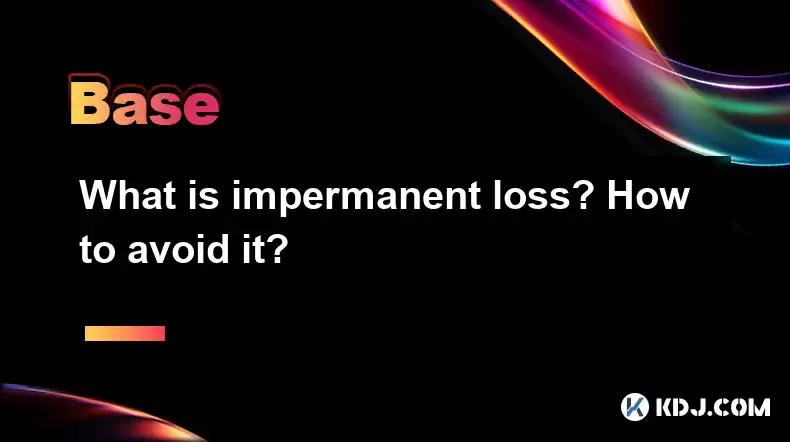
- Impermanent loss (IL) is the difference between holding crypto assets directly versus providing liquidity in a decentralized exchange (DEX).
- IL arises from fluctuating price ratios between the asset pairs in a liquidity pool.
- Strategies to mitigate IL include choosing less volatile asset pairs, adjusting your liquidity provision based on market conditions, and utilizing hedging strategies.
- Understanding the risks and mechanics of IL is crucial before participating in liquidity provision.
Impermanent loss (IL) is a unique risk associated with providing liquidity to decentralized exchanges (DEXs). Unlike traditional exchanges, DEXs often rely on automated market makers (AMMs) that use liquidity pools. These pools contain pairs of cryptocurrencies, and liquidity providers (LPs) deposit assets into these pools to earn trading fees. The core of IL lies in the price fluctuations of the asset pair within the pool. If the price ratio of your deposited assets changes significantly from when you initially provided liquidity, you might experience an impermanent loss when you withdraw. This isn't a permanent loss until you withdraw your assets, and the trading fees earned can potentially offset the IL.
How Does Impermanent Loss Occur?Imagine you provide liquidity to a pool with an equal value of Token A and Token B. The price ratio at the time of deposit is 1:1. However, the price of Token A doubles while the price of Token B remains unchanged. To maintain the 50/50 ratio in the pool (as required by most AMMs), the protocol will automatically adjust the balance, selling some of your Token A to buy more Token B. When you withdraw, you'll have less of Token A and more of Token B than you initially deposited, resulting in a potential loss compared to simply holding both assets individually. The magnitude of this loss depends entirely on the price movements.
How to Avoid or Minimize Impermanent Loss?There isn't a foolproof method to completely avoid IL, as it's inherent to the nature of liquidity provision in AMMs. However, several strategies can help minimize it:
- Choose Less Volatile Asset Pairs: Providing liquidity to pools with assets that have relatively stable price movements reduces the likelihood of significant price ratio changes. Pairs with correlated assets also tend to experience less IL.
- Monitor and Adjust Your Position: Actively track the price movements of your asset pair. If you anticipate a significant price divergence, consider withdrawing your liquidity before the loss becomes substantial. This requires constant market monitoring and timely action.
- Utilize Hedging Strategies: More advanced techniques like using options or futures contracts can help offset potential losses from price fluctuations. This involves complex strategies and understanding of derivatives markets. It's generally recommended only for experienced traders.
- Focus on Trading Fees: The trading fees earned from providing liquidity can sometimes offset the IL, particularly in highly active pools. However, this isn't guaranteed and depends on the trading volume of the pool.
- Long-Term Perspective: If you believe in the long-term growth of both assets in the pair, the potential IL might be less concerning, especially if the trading fees earned over time are significant enough to offset it.
Calculating the exact amount of IL is complex and depends on the specific AMM used and the price movements of the assets. Many online calculators are available to simulate IL based on different scenarios. These calculators require you to input the initial investment, the initial and final prices of each asset, and the specific AMM used.
Impermanent Loss vs. Permanent LossIt’s crucial to differentiate between impermanent and permanent loss. Impermanent loss is only realized when you withdraw your liquidity from the pool. Until then, it remains unrealized. A permanent loss occurs when the value of your assets drops below your initial investment, even if you hadn't provided liquidity. IL only affects the potential profit compared to holding.
Common Questions and Answers:Q: Is impermanent loss always negative?A: No. If the price of both assets in the pair increases proportionally, you can still profit even after accounting for IL. The trading fees earned can also outweigh any potential IL.
Q: Can I avoid impermanent loss entirely?A: No. Impermanent loss is an inherent risk of providing liquidity to AMMs due to price fluctuations. However, you can mitigate the risk through various strategies.
Q: Are all liquidity pools equally risky regarding IL?A: No. Pools with less volatile assets generally have lower IL risk compared to those with highly volatile assets. The specific AMM's mechanics also play a role.
Q: What is the best strategy to minimize IL?A: There's no single "best" strategy. The optimal approach depends on your risk tolerance, market knowledge, and the specific asset pair. A combination of strategies may be most effective.
Q: How do I calculate my impermanent loss?A: You can use online calculators that take into account the initial and final prices of your assets, the initial investment, and the AMM algorithm.
Q: Should I avoid liquidity providing altogether due to IL?A: Not necessarily. The potential for earning trading fees can offset IL in many cases. However, you must fully understand the risks involved before participating.
Q: What are the benefits of providing liquidity despite the risk of IL?A: The primary benefit is earning trading fees. Additionally, some platforms offer incentives to liquidity providers, further increasing the potential returns.
Disclaimer:info@kdj.com
The information provided is not trading advice. kdj.com does not assume any responsibility for any investments made based on the information provided in this article. Cryptocurrencies are highly volatile and it is highly recommended that you invest with caution after thorough research!
If you believe that the content used on this website infringes your copyright, please contact us immediately (info@kdj.com) and we will delete it promptly.
- XRP Tokens: Can Owning Them Actually Make You Rich, Ya Know?
- 2025-10-09 18:45:15
- ADA Whales: Riding the Support Wave to Potential Gains?
- 2025-10-09 18:25:16
- H Mining: Navigating Crypto Investing with Risk Mitigation
- 2025-10-09 18:45:15
- Riding the Crypto Rollercoaster: IPO Genie, Crypto Presales, and Liquidation Lessons
- 2025-10-09 18:25:16
- MetaMask Goes Big: Perpetual Trading, Polymarket, and a Whole New DeFi Playground
- 2025-10-09 18:30:02
- Citibank, Stablecoins, and BVNK: A New York Minute on Wall Street's Crypto Moves
- 2025-10-09 18:30:02
Related knowledge

How does cryptocurrency achieve decentralization?
Sep 30,2025 at 04:37am
Understanding the Foundation of Decentralization in Cryptocurrency1. Cryptocurrency achieves decentralization primarily through the use of blockchain ...
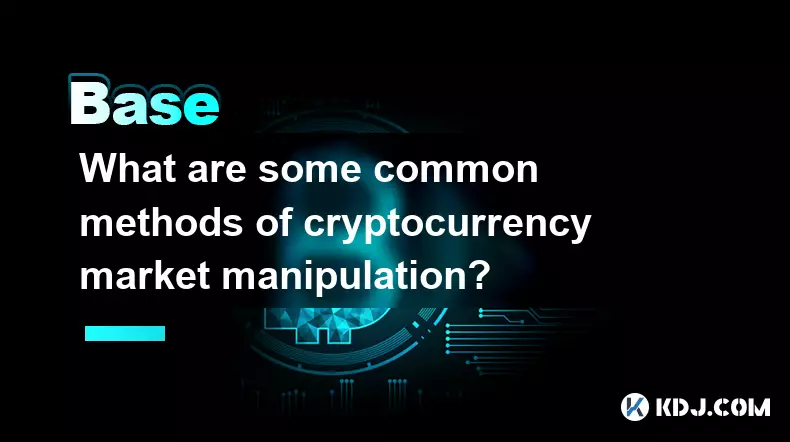
What are some common methods of cryptocurrency market manipulation?
Sep 27,2025 at 02:55am
Wash Trading and Its Impact on Market Perception1. Wash trading involves an individual or entity simultaneously buying and selling the same cryptocurr...
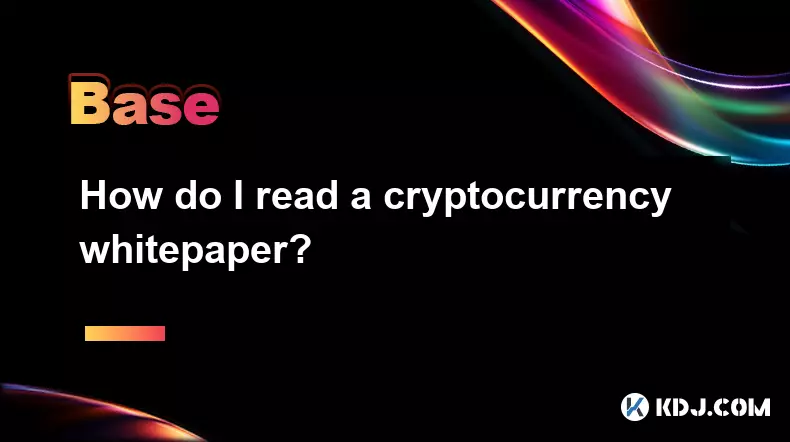
How do I read a cryptocurrency whitepaper?
Sep 27,2025 at 05:54am
Understanding the Structure of a Cryptocurrency Whitepaper1. Begin by identifying the executive summary, which outlines the project’s core vision and ...
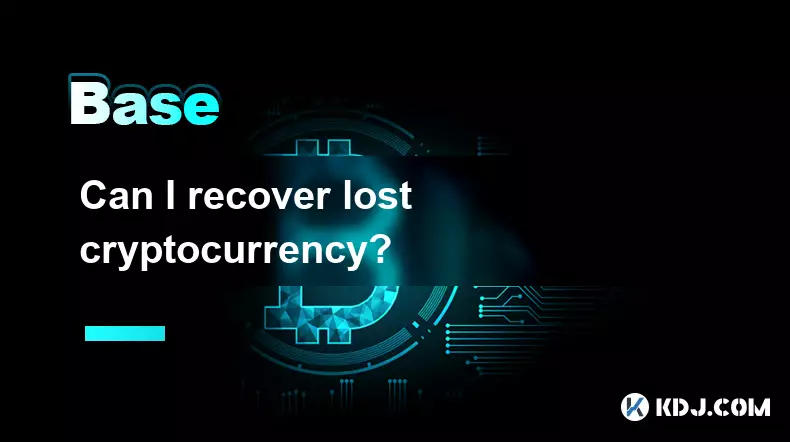
Can I recover lost cryptocurrency?
Sep 25,2025 at 08:18am
Understanding the Nature of Cryptocurrency Loss1. Cryptocurrency operates on decentralized networks, meaning there is no central authority to reverse ...
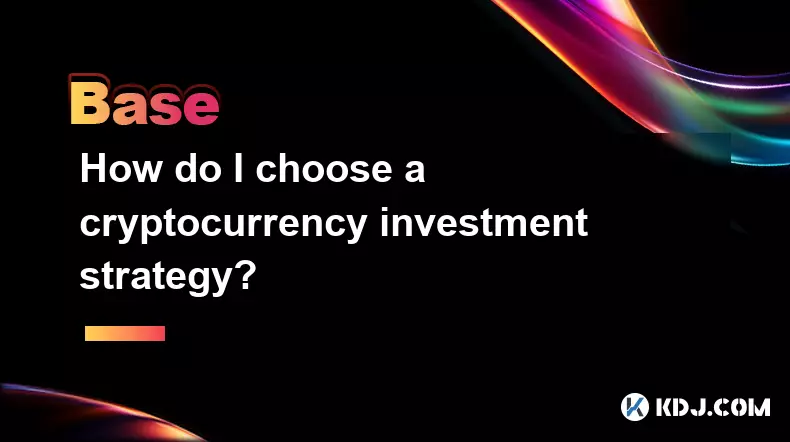
How do I choose a cryptocurrency investment strategy?
Sep 27,2025 at 03:55pm
Understanding Risk Tolerance in Crypto Investing1. Assessing personal risk tolerance is a foundational step when entering the cryptocurrency market. V...
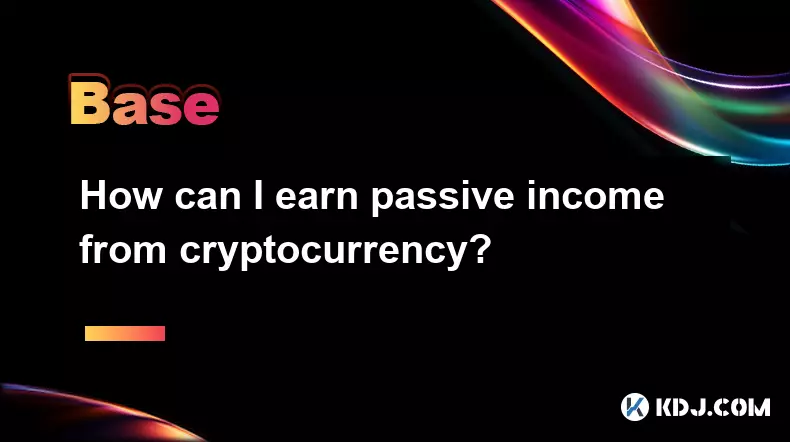
How can I earn passive income from cryptocurrency?
Sep 23,2025 at 10:18am
Staking Cryptocurrencies for Regular Returns1. Many blockchain networks operate on a proof-of-stake (PoS) consensus mechanism, allowing users to earn ...

How does cryptocurrency achieve decentralization?
Sep 30,2025 at 04:37am
Understanding the Foundation of Decentralization in Cryptocurrency1. Cryptocurrency achieves decentralization primarily through the use of blockchain ...

What are some common methods of cryptocurrency market manipulation?
Sep 27,2025 at 02:55am
Wash Trading and Its Impact on Market Perception1. Wash trading involves an individual or entity simultaneously buying and selling the same cryptocurr...

How do I read a cryptocurrency whitepaper?
Sep 27,2025 at 05:54am
Understanding the Structure of a Cryptocurrency Whitepaper1. Begin by identifying the executive summary, which outlines the project’s core vision and ...

Can I recover lost cryptocurrency?
Sep 25,2025 at 08:18am
Understanding the Nature of Cryptocurrency Loss1. Cryptocurrency operates on decentralized networks, meaning there is no central authority to reverse ...

How do I choose a cryptocurrency investment strategy?
Sep 27,2025 at 03:55pm
Understanding Risk Tolerance in Crypto Investing1. Assessing personal risk tolerance is a foundational step when entering the cryptocurrency market. V...

How can I earn passive income from cryptocurrency?
Sep 23,2025 at 10:18am
Staking Cryptocurrencies for Regular Returns1. Many blockchain networks operate on a proof-of-stake (PoS) consensus mechanism, allowing users to earn ...
See all articles










































































